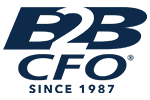
Using Timeslips An Approach To Measurements And Metrics In A Law Practice
Posted on March 15, 2020 by Rick Daigle
In January I started work with the owner of a specialty law practice. The owner wanted help in 2 broad areas. First, he wanted help, or really someone to take over the financial operations of the practice so he could focus on the business, clients, and staff. Second, he wanted to grow the business by adding lawyers and paralegals.
The first two months were spent implementing QuickBooks as the accounting solution, and integrating systems and processes to get data from Amicus Attorney and TimeSlips into QB. This was followed by two months working off old WIP from the past 3 years, invoicing and collecting for work done in the past 3 years, and general clean up of the timekeeping and activity tracking system. The next two months were used to put more formality, documentation, and discipline into the accounting and recordkeeping systems.
During this period I also tried to find a local expert resource in TimeSlips. I was not able to find an acceptable resource so I rolled up my sleeves and learned how to use the TimeSlips reporting capabilities to extract statistics which we could use to implement a formal measurement system.
In many law firms the key revenue driver is billable hours. So, once the historical basis is set regarding the billable hour % for each timekeeper you can set a goal for increasing the billable %. This should also be accompanied by a reward system designed to drive the desired behavior and outcome.
Through the analysis of TimeSlips data I was able to extract this billable performance for the firm:
| Jan | Feb | Mar | Apr | May | Jun | 6 month | ||
| 2009 | 2009 | 2009 | 2009 | 2009 | 2009 | Totals | ||
| Billable | Fees | $ 30,301 | $ 41,837 | $ 40,292 | $ 42,877 | $ 39,340 | $ 48,510 | $243,157 |
| Unbillable | Fees | $ 12,261 | $ 19,179 | $ 18,116 | $ 16,275 | $ 15,558 | $ 14,905 | $ 96,292 |
| Billable | % | 71.2% | 68.6% | 69.0% | 72.5% | 71.7% | 76.5% | 71.6% |
| By increasing Firm’s Billable Activity by: | $ 32,429 | $ 44,888 | $ 43,212 | $ 45,835 | $ 42,085 | $ 51,680 | $260,129 | ||
| 5% | 76.2% | 73.6% | 74.0% | 77.5% | 76.7% | 81.5% | 76.6% | ||
| Additional Income: | $ 2,128 | $ 3,051 | $ 2,920 | $ 2,958 | $ 2,745 | $ 3,171 | $ 16,972 | ||
So, an increase in billable activity of only 5% would have covered all payroll and benefit related cost for a payday. A 10% increase would have covered payroll and benefit related costs for a month. And this is from a team of two lawyers and one paralegal. We have recently added another paralegal to staff, and will add another lawyer next month.
Next I had to analyze the slip details for the non-billable activities to determine what the revenue generating staff doing which might be eliminated or reassigned. I used this data to prepare for a meeting with the owner to present a plan which included changes in staff job responsibilities, a P&L projection, and Cash Flow projection. The projections showed us ending the year with $465,000 cash in the bank. We started the year with $20,000.
The owner looked at me and asked if I was serious! When I replied that I was most certainly serious he asked me to prepare for a presentation at the next staff meeting a few days later. That occurred today and the presentation was met with much enthusiasm.
In conclusion, the detailed data contained in the TimeSlips database holds some valuable information. You can use this data to develop a systematic approach to increasing revenue and implementing a great measurement system.

